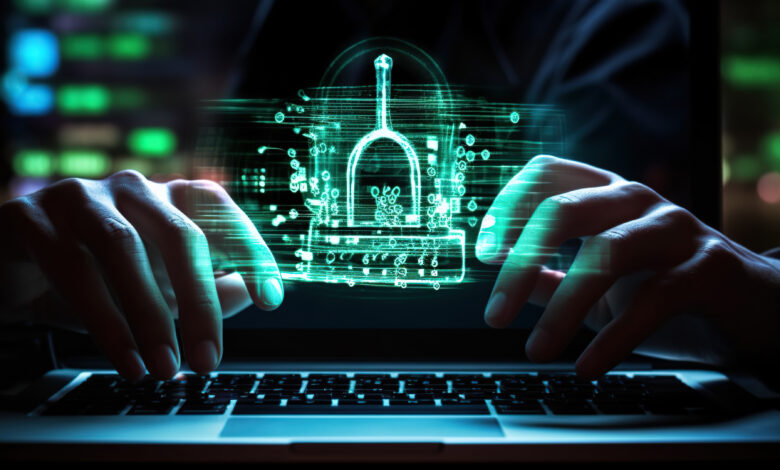Stay Ahead of the Game: Why ISO 27001 Certification is Crucial for Modern Businesses!

Introduction
A. Overview of ISO 27001
ISO 27001 is an internationally recognized standard for information security management. It provides a comprehensive framework for establishing, implementing, maintaining, and continually improving an Information Security Management System (ISMS). The standard sets out the criteria for managing sensitive company information so that it remains secure. It includes requirements for the assessment and treatment of information security risks tailored to the needs of the organization.
B. Importance of Information Security
In today’s digital age, information is a critical asset for any organization. Protecting this information from a variety of threats is essential to ensure business continuity, minimize business risk, and maximize return on investments and business opportunities. Information security helps in protecting data from unauthorized access, disclosure, alteration, and destruction. It ensures the confidentiality, integrity, and availability of information, thereby safeguarding the interests of all stakeholders, including customers, employees, and shareholders.
C. Purpose of ISO 27001 Certification
The primary purpose of ISO 27001 certification is to provide a structured and effective approach to managing information security risks. Achieving this certification demonstrates an organization’s commitment to protecting its information assets and complying with legal and regulatory requirements. It also enhances customer confidence, improves risk management processes, and can provide a competitive advantage by showcasing a dedication to information security best practices. Additionally, ISO 27001 certification helps organizations to identify vulnerabilities and systematically address them, leading to a more robust and secure information infrastructure.
What is ISO 27001?
ISO 27001 is an internationally recognized standard for information security management systems (ISMS). It provides a systematic approach for managing sensitive company information, ensuring its confidentiality, integrity, and availability. Here’s a breakdown of its components:
A. Definition and background
- ISO 27001 sets out the requirements for establishing, implementing, maintaining, and continually improving an ISMS within the context of the organization’s overall business risks.
- It is designed to be applicable to all types and sizes of organizations and helps in managing and protecting information assets.
B. Key components and structure of ISO 27001
- The standard follows a plan-do-check-act (PDCA) approach, emphasizing continual improvement.
- It includes requirements for risk assessment and treatment, security controls, documentation, management commitment, and continual review and evaluation of the ISMS.
- The structure of ISO 27001 consists of clauses addressing context, leadership, planning, support, operation, performance evaluation, and improvement.
C. Benefits of ISO 27001 certification
- Enhances an organization’s credibility and trustworthiness, especially when dealing with clients and stakeholders concerned about information security.
- Helps in identifying and mitigating information security risks, reducing the likelihood of data breaches or security incidents.
- Provides a systematic and structured approach to managing information security, leading to improved processes and efficiency.
The Importance of Information Security Management Systems (ISMS)
A. Definition of ISMS
An Information Security Management System (ISMS) is a comprehensive framework of policies, processes, and procedures implemented by an organization to manage and protect its sensitive information assets. It encompasses a systematic approach to identifying, assessing, and managing information security risks, as well as implementing controls to mitigate those risks.
B. Role of ISMS in an organization
The role of an Information Security Management System (ISMS) within an organization is pivotal for ensuring the protection of its sensitive information assets. Here’s how ISMS contributes:
- Risk Management: ISMS enables organizations to systematically identify, assess, and mitigate information security risks. By understanding potential threats and vulnerabilities, organizations can implement appropriate controls to safeguard their data.
- Compliance Assurance: ISMS helps organizations ensure compliance with relevant laws, regulations, and industry standards pertaining to information security. By adhering to these requirements, organizations mitigate legal and regulatory risks while also enhancing trust with stakeholders.
- Protection of Assets: ISMS assists in safeguarding the confidentiality, integrity, and availability of information assets. Through the implementation of security controls and measures, organizations can prevent unauthorized access, modification, or destruction of sensitive data.
- Business Continuity: ISMS plays a vital role in maintaining business continuity by minimizing the impact of security incidents or disruptions. By establishing contingency plans and response procedures, organizations can mitigate risks and ensure the uninterrupted operation of critical business processes.
- Enhanced Reputation: Implementing an ISMS demonstrates a commitment to information security and risk management, which enhances the organization’s reputation and credibility. This can lead to increased trust from customers, partners, and other stakeholders.
C. Relationship between ISMS and ISO 27001
The relationship between an Information Security Management System (ISMS) and ISO 27001 is fundamental, as ISO 27001 serves as a globally recognized standard for ISMS implementation. Here’s how they are connected:
- ISO 27001 as a Framework: ISO 27001 provides a structured framework of requirements and best practices for establishing, implementing, maintaining, and continually improving an ISMS. It outlines the key components and processes necessary for effective information security management.
- Guidance for Implementation: Organizations often use ISO 27001 as a guideline for developing and implementing their ISMS. The standard offers detailed requirements and recommendations for risk assessment, control selection, documentation, and monitoring, helping organizations establish robust security practices.
- Certification: ISO 27001 certification signifies that an organization’s ISMS complies with the requirements of the standard. Achieving certification demonstrates to stakeholders, including customers, partners, and regulators, that the organization has implemented rigorous information security controls and practices.
- Alignment with Best Practices: ISO 27001 aligns with internationally recognized best practices in information security management. By following the principles outlined in the standard, organizations can enhance their security posture, mitigate risks, and improve overall resilience to threats and vulnerabilities.
Common Challenges and Solutions in ISO 27001 Certification
A. Overcoming resource constraints
Challenge: Limited resources, including budget, personnel, and time, can hinder the implementation of ISO 27001 requirements effectively.
Solution: Prioritize efforts based on risk assessment results. Focus on critical assets and high-priority risks first. Leverage existing resources efficiently and consider outsourcing certain tasks, such as conducting risk assessments or implementing technical controls, if necessary. Additionally, seek support from senior management to allocate adequate resources and prioritize information security initiatives.
B. Addressing employee resistance
Challenge: Resistance from employees can impede the adoption of new security policies, procedures, and controls mandated by ISO 27001.
Solution: Foster a culture of security awareness and engagement through training, communication, and involvement. Clearly communicate the rationale behind ISO 27001 implementation and how it benefits both the organization and individual employees. Encourage open dialogue, address concerns, and involve employees in the development and implementation of security measures. Recognize and reward positive security behaviors to reinforce desired outcomes.
C. Ensuring continuous improvement
Challenge: Maintaining momentum and sustaining improvements over time can be challenging, especially after achieving ISO 27001 certification.
Solution: Establish a culture of continuous improvement by regularly reviewing and updating security measures. Conduct periodic audits, assessments, and management reviews to identify areas for enhancement. Encourage feedback from stakeholders and incorporate lessons learned from security incidents, near misses, and industry developments. Set measurable objectives and targets for improving the effectiveness of the ISMS and track progress towards achieving them.
Tips for Maintaining ISO 27001 Certification
A. Regular audits and reviews
Conduct regular internal audits and management reviews of the Information Security Management System (ISMS) to ensure compliance with ISO 27001 requirements. Identify areas for improvement and take corrective actions as necessary. Additionally, consider engaging external auditors periodically to validate the effectiveness of the ISMS and maintain certification credibility.
B. Continuous training and awareness programs
Invest in ongoing training and awareness initiatives to keep employees informed about their roles and responsibilities in maintaining information security. Provide regular updates on security policies, procedures, and best practices. Offer training sessions, workshops, and simulations to reinforce security awareness and educate staff about emerging threats and vulnerabilities.
C. Keeping documentation up to date
Maintain accurate and up-to-date documentation of the ISMS, including policies, procedures, risk assessments, and incident response plans. Regularly review and update documentation to reflect changes in the organization’s operations, technology environment, regulatory requirements, and security controls. Ensure that documentation is accessible to relevant stakeholders and aligned with ISO 27001 standards.
D. Adapting to new security threats and challenges
Stay vigilant and proactive in monitoring and addressing new security threats and challenges. Keep abreast of emerging trends, vulnerabilities, and attack techniques through threat intelligence sources, industry reports, and information sharing platforms. Regularly update risk assessments and security controls to mitigate evolving risks. Implement a robust incident response plan to detect, respond to, and recover from security incidents effectively.
Conclusion
A. A Shield Against Threats: Recap of ISO 27001 Certification
ISO 27001 certification is more than just a badge of honor; it’s a testament to an organization’s commitment to information security. By implementing rigorous security measures and protocols, businesses can effectively mitigate risks and protect their valuable data assets.
B. Empowering Organizations: Encouragement to Pursue Certification
For organizations looking to bolster their security posture, obtaining ISO 27001 certification is a strategic move. Not only does it enhance credibility and trust among stakeholders, but it also demonstrates a proactive approach towards safeguarding sensitive information. With cyber threats on the rise, investing in ISO 27001 certification is an investment in long-term resilience and sustainability.
C. Navigating the Future: Final Thoughts on Information Security Management
As technology continues to evolve, so do the challenges associated with information security. In an increasingly interconnected world, organizations must adapt to emerging threats and stay ahead of the curve. ISO 27001 certification provides a robust framework for addressing these challenges and ensures compliance with international standards. By embracing a culture of continuous improvement and vigilance, businesses can navigate the complexities of information security management with confidence.
In conclusion, ISO 27001 certification is not just a regulatory requirement; it’s a strategic imperative for businesses operating in today’s digital age. By prioritizing information security and investing in certification, organizations can safeguard their reputation, mitigate risks, and unlock new opportunities for growth and success.



